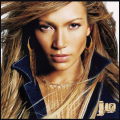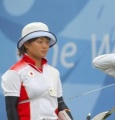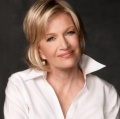Buddhist fashion
During the time of the Buddha and earlier, it was common for seekers of enlightenment to shed their clothes and go around as naked ascetics. The Buddha's path is a Middle Way and requires clothes to be worn by monastics and lay people. Clothes are significant in Buddhism for this reason and also by the fact that beautiful clothes were described as a sign of merit or attainment. In the Vimanavatthu and Petavatthu there are stories of departed beings who have gone to good and bad destinations in the Buddhist cosmology. Moggallana through the powers of the mind with meditation visited these regions to inquire what deeds led them there. The woeful states were inhabited by beings who were described as naked, while those residing in heavenly mansions were described as possessing beautiful clothes. In the Theravada commentaries (DA ii.427, DhSA, 33) one of the signs of a deva's (heavenly being) imminent death is that the clothes becomes soiled, which again points to the significance of clothes in Buddhism.
Lay people have no specific requirement about clothing and unlike Western converts to such Eastern movements as Hare Krishna, Buddhists do not need to wear any robes, white or any other color or paint their foreheads. Buddhists follow the culture of the land they live in and are not asked to follow a foreign culture just because the founding teacher is from another land.
In spite of this, some lay Buddhists like to wear yellow (color of Buddha's robes and yellow also represents 'middle way') or white, but in the style of modern clothing, not robes. This is a voluntary color choice of some Buddhists and not a requirement. Some like to wear the modern clothing of their culture but in one of the colors of the Buddhist flag; yellow, white, orange, blue, or red.

At Dhamma centers most Buddhists wear simple, modern clothing that is comfortable to sit in for the meditation sessions. This includes t-shirts, halter tops, dress shirts (regular shirts with buttons and collars), jeans, flannel shirts, polo shirts, and sweat suits.
Fashion, for many is considered an art and for some Buddhists, art is seen as another attachment. While it is clear that a fully enlightened arahant may have little use and no attachment to mundane things like art, for other Buddhists and those interested in Buddhism, art can be a wholesome action and interest. The Buddha saw its value because he said monks and nuns could beautify their monasteries by painting them different colours and decorating them with various geometrical and floral designs (Vinaya 2. 117). As Buddhism spread in the centuries after the Buddha's passing his teachings gave an impetus to all the arts - painting, sculpture, poetry, drama and to a lesser degree music. There are Buddhist Vinaya rules against monks and nuns indulging in arts, shows, and games, but this rule does not apply to lay people. Monks and nuns are supposed to devote their lives to the study and teaching of Dhamma and it would look unseemly for them to be seen by lay people engaged in such things as watching movies, painting pictures, or discussing fashion.
Fashion can not only be an acceptable interest in the arts, but also a skilful means for acquiring more interest in Buddhism. For many non-Buddhists, there is the false belief that Buddhists, similar to Hare Krishnas and other religions or movements based out of the East, must wear Indian robes or other robes from Asian cultures. Lay people wear what they like and Buddhists who wear modern clothing and especially those who wear fashionable clothes in artistic ways, demonstrate that Buddhists adapt to their local cultures and are otherwise no different than most other people in the dominant society.
(...This article is not to be taken too vigorously and is meant mostly for fun and to show that Buddhists can be like the rest of the people in dominant society on many mundane things such as fashion.) Fashion is impermanent (Anicca) and is never "finished" as styles change.
As styles change we can expect many Buddhists to continue to follow the fashions of their cultures while still practicing the Buddha-Dhamma. For those that follow the fashion trends, it can be an opportunity for practicing other Buddhist teachings (besides Skilful means), including that of Anicca (impermanence), letting go, and non-attachment (as the styles change). And then there maybe the chance for generosity (dana) as those who change some of their wardrobe can give it to the less fortunate.
Shown on this page above and below are the many examples of lay Buddhists, including celebrities who wear the collar up style. It is not exactly clear why the collar up style is particularly popular among Buddhists, but it may be from the Mandarin (Manchurian, Nehru collar) stand-up collar style mixed with modern clothing of dress shirts and polo shirts for an East-West fashionable look.
There has been at least one case of a teacher wearing the collar up to please the Buddhists in his community, where it is reported that "He discarded his well-cut Western suit and picked the white turned-up collar top as a concession to the Sinhala-Buddhists" (although most likely referring to the traditional stand-up collar).[1]
Meditation position with collar up. Lay Theravada Buddhists do not wear robes during meditation and may wear whatever they like
Elaine Wynn (a Buddhist) with shirt and blazer collar up
Goldie Hawn (Buddhist) with polo shirt collar up
Jennifer Lopez with collar up (has stated she has interest in Buddhism)
Kate Hudson (Buddhist) with coat collar up
Sharon Stone, actress, fashion model, and Buddhist here with coat collar up
Tiger Woods (Buddhist), shown here with his favorite color of red (a Buddhist color)
Tina Turner, a Nichiren Buddhist, seen here with denim jacket, collar up
Jackie Chan (Buddhist) with the traditional mandarin stand up collar
Sakyong Mipham (Vajrayana Buddhist teacher) with mandarin stand up collar
Jackie Chan with collar up
Jackie Chan with blazer coat collar up
(Pema Chodron) Some monastic robes include the mandarin stand up collar
Sarah Jessica Parker, a JuBu (Jewish-Buddhist) with shirt and denim jacket collars up
Sting, musician (a Buddhist), with collar up
Maurine Stuart, a Zen Buddhist teacher, with collar up
Walking meditation with collar up
Buddhist with collar up, next to a Maha Bodhi Temple replica
Buddhist from Indonesia, with collar up
Buddhist from Sri Lanka, with collar up
Buddhist in the anjali greeting/pose, with collar up
Buddhist from India with polo shirt collar up
Thanissara, a Theravada Buddhist teacher and former nun, with collar up
See Also
Collar up fashion in contemporary society
The collar up style has been popular for many decades, kept in fashion primarily from supermodels, models, and other celebrities who occasionally to frequently wear this style. The origin is most likely from the stand-up mandarin collar from the East. Pictured below are some celebrities (from all religions and backgrounds) who frequently wear the collar up.
Supermodel Aishwarya Rai (from India) with collar up
Diane Sawyer, host of Good Morning America 1999-2009, with collar up
Diane Sawyer, Anchor for ABC News from 2009, with collar up
Finance guru Suze Orman with collar up
Michael Jackson, King of Pop, with collar up
Elvis Presley, King of Rock, with collar up
Kanye West, musician, with collar up
Jane Fonda, actress, model, political activist, with collar up
Ina Garten aka Barefoot Contessa, chef on Food Network, with collar up
Footnotes
- ↑ Asian Tribune. "Buddhist channel article". Retrieved on May 18, 2005.
















































































